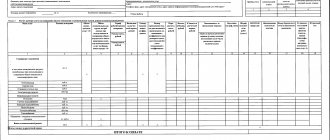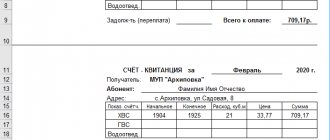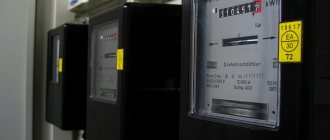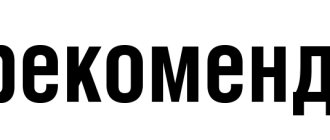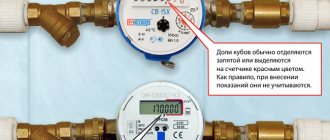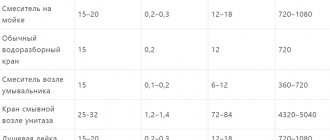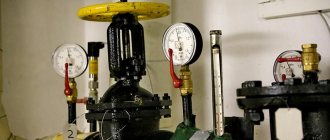Legislation regulating the cost of water
Tariffication of water supply is determined by the government of the Russian Federation. In some regions, the municipality is entrusted with the task of adjusting prices for resource consumption. Local self-regulatory authorities in their work rely on Article No. 157 of the Housing Code of the Russian Federation, paragraph 2.
The formula and example of calculating amounts is an issue that is being decided by the Russian government at the highest level. The information is set out in detail in Appendix 2 PP/354 dated 05/06/2011 “On the cost and quality of public utilities provided to Russian citizens.”
Regulations
The main legislative document of the Russian Federation regulating tariffs for utility services is Appendix 2 PP/354 dated 05/06/2011 “On the cost and quality of utility services provided to Russian citizens.”
Globally, issues of resource supply and water disposal are regulated by Federal Document No. 416/FZ dated November 7, 2011 (latest version 2020). The methods and methods of establishing value are touched upon here.
The tariff for hot water in Moscow from 2020 is prescribed in the order from the Ministry for City Development in political and economic terms DEPiR of Moscow dated December 3, 2018 No. 233-TR, and for cold water - No. 309/TR dated December 17, 2020.
Preferential categories of citizens
The planned increase in prices for utilities will not affect the following preferential category of citizens:
- people who have retired;
- persons of the Russian Federation who have the status of a pensioner based on length of service;
- disabled people due to health or work;
- veterans.
In order to receive preferences for public services, a citizen must submit an application to the resource supply company or management company. When applying, you must have with you a passport and a document confirming the right to receive benefits when paying your water bill.
Where to check the established tariffs and prices
Mosvodokanal tariffs
To be aware of how much one cubic meter of drinking liquid supplied to homes costs in your region of residence, you need to monitor the administrative websites of the region. In addition, experts recommend monitoring electronic sources of information from Mosvodokanal JSC.
Tariff for heating hot water 2020 from July 1, Moscow region
4.4 Consumers equal to the population (tariffs are indicated in rubles, including VAT): Associations of citizens purchasing electrical energy (power) for use in their outbuildings (cellars, sheds). Non-profit associations of citizens (garage construction, garage cooperatives) and citizens who own detached garages, purchase electrical energy (power) for the purpose of consumption for household needs and not used for commercial activities. Guarantee suppliers, energy sales, energy supply organizations purchasing electrical energy (power) for the purpose of further sale to those equal to the population categories of consumers specified in this paragraph2.
We recommend reading: Low-Income Family Benefits
The standard for the consumption of thermal energy used to heat water for the purpose of providing public services for hot water supply (Gcal per 1 cubic meter) takes into account the type of hot water supply system (open, closed) inside an apartment building or residential building, as well as the following design features of such houses :
Calculation methods for hot and cold water meters in Moscow and the region
The cost of hot water in Moscow includes, in addition to the use of the resource, several more consumable items:
- The price of electrical energy consumed by the station.
- Supplies supplied to homes are subject to regular cleaning in accordance with sanitary and epidemiological standards. This is done with special reagents. Their cost and the cost of cleaning work are included in the tariff.
- The wage fund + social contributions of employees are proportionally distributed over the entire volume of liquid consumed.
- Additional expenses of the water utility: rental of premises, purchase of equipment, expenses for temporary operation of various equipment. They are also distributed proportionally to all consumers.
- Taxes on resources, repair of stations and networks. These expenses are charged similarly to the accounts of owners of apartments and private houses.
- In addition, the amounts spent on eliminating the natural results of water use fall on the overall cost indicators. Accordingly, they are included in the tariff.
Price of 1 cubic meter of hot and cold water in Moscow
The cost of a cube of hot and cold water in Moscow for 2020 is regulated by the Russian government. In some regions, local authorities have the power to make minor tariff adjustments.
Prices per cube of hot water and cold water are subject to increase from this year. The increase is carried out in two stages. Since the beginning of 2020, the cost per 1 m3 of liquid has already increased by 1.7%. The second wave of tariff increases is scheduled for July. The price will change by 2.1% upward.
Specifically for Muscovites and residents of the region, the municipality announced prices for 2020 for the first six months of this year:
- 1 m3 of cold water is 38.06 rubles;
- one cubic meter of hot water – 125.69 rubles.
Please note: Moscow and Moscow Region are included in the list of regions that have the right to change tariff rates in relation to the entire country. Therefore, the local municipality decided to increase the price of water in the second half of 2020 by 5% compared to the previous reporting period.
Formula for calculating the cost of cold water and hot water in Moscow Region
The price of hot water per cubic meter in Moscow, as well as for cold water, is formed in a similar way. The presence of accounting and measuring equipment (IME) in the apartments significantly influences the final result.
If a resource consumption meter is not installed on a property, then the cost of hot and cold water in Moscow is affected by the number of residents/registered people in the living space.
The average resource consumption per person in a given region is multiplied by the number of citizens. If there is an installed control and measuring device, then the formula for calculating payments includes the number of cubes used multiplied by the tariff.
Calculation example
The settlement system is defined as unified for the entire territory of the Russian Federation, as indicated in the second appendix to PP/354 dated May 6, 2011, in the latest edition of 2020.
The formula looks like this:
The amount for consumed hot water or cold water = the volume of water in quantitative terms for a fixed period is multiplied by the regional tariff for hot and cold supply.
Let's look at a specific situation as an example. We take into account that the resource is supplied to a private apartment located in an apartment building.
At the same time, an accounting and measuring device is installed at the facility:
- The volume of hot water that was used in April 2020 is 4 m3.
- The tariff for hot water supply in the region is 148 rubles per cubic resource consumption.
- Cost of service: 148 x 4 =592 rub.
Therefore, the amount in the April receipt should be 592 rubles.
If a water meter is not installed in the apartment due to the fact that it is technically impossible to install it. Therefore, the amount should be calculated based on the people actually living at the site, both permanent and temporary.
The average consumption per person is set at the regional level. Such indicators must be looked for on administrative websites for the area of residence. The tariff for one cube of cold water and hot water is also posted on the portal of the local city hall.
Next, everything is simple:
Number of people X Average standard for water use by one person, in region X per tariff per 1 cubic meter.
For example, 4 citizens live in an apartment. The rate of hot water consumption is 4.3 m3 per person per month. The price for one cube of resource is 148 rubles.
We get: 4 x 4.3 x 148 = 2545.60 rubles.
In total, this amount will appear in receipts for each month, taking into account the fact that the number of people remains unchanged. The water tariff will remain the same and the resource consumption standard per capita will not undergo adjustments.
Water tariffs
Info
An impeller or turbine located in the water flow is connected to a counting mechanism that converts the number of its revolutions into cubic meters. The main difference between these types of meters is the axis of rotation: the turbine is located parallel to the movement of water, and the impeller is installed in a vertical position.
No less popular are ultrasonic, vortex, and electromagnetic ones, the design of which is based on an electronic mechanism. Meters are also divided into dry-propelled and wet-propelled.
The mechanism of wet-mode meters is placed in the water, while in dry-mode meters the counting mechanism is separated from the medium being measured. In addition, single-jet and multi-jet meters are available on the market.
The latter are considered more reliable and efficient. For installation in apartments, as a rule, single-jet meters with a vane mechanism are used.
Hot water tariff from January 1, 2020
The government of the Russian Federation plans to increase the hot water tariff for the population from January 1, 2020. Price changes will be made twice: at the beginning and in the second half of the year. This news about the change in tariff rates has been confirmed. There will be a promotion!
The hot water tariff for the population will increase by an average of 4% from January 1, 2020. Such an increase will hurt the family budget of the country's citizens. Particularly noticeable consequences of such a reform will be felt by low-income sections of society. Although the problem could have been solved in another way, the Government did not consider it necessary to find a more optimal solution.
Standard for heating hot water in 2020 in Moscow
Single-rate tariff rub./kWh — 3.2 Single-rate tariff differentiated by two zones sugok Day zone (peak and half-peak) rub./kWh — Night zone rub./kWh — 3.3 Single-rate tariff differentiated by three zones sugok 1 11 different zone rub. /kWh - Semi-peak zone rub./kWh - Night zone rub./kWh - 4 Consumers equal to the population (tariffs are indicated including VAT) 4.1 Gardening, gardening or dacha non-profit associations of citizens - non-profit organizations established by citizens on a voluntary basis to promote it members in solving general social and economic problems of gardening, vegetable farming and dacha farming. Guaranteed suppliers, energy sales, energy supply organizations that purchase electrical energy (power) for the purpose of further sale to categories of consumers equal to the population specified in this paragraph 2.
Single-rate tariff RUB/kWh 3.67 3.2 Single-rate tariff differentiated by two zones of the day Day zone (peak and half-peak) RUB/kWh 4.22 Night zone RUB/kWh 1.58 3.3 Single-rate tariff differentiated by three zones of the day! 11-peak zone rub./kWh 4.40 11-peak zone rub./kWh 3.67 1 (full-time zone rub./kWh 1.58 4 Consumers equal to the population (tariffs are indicated taking into account the IDS) 4.1 Gardening, gardening or dacha non-profit associations of citizens - non-profit organizations, established by citizens on a voluntary basis to assist its members in solving general social and economic problems of gardening, vegetable farming and summer cottage farming.
We recommend reading: What are the Benefits for Parents of a Cadet?
Housing and communal services from January 1, 2019, in Moscow: tariff changes, latest news
Since the indexation percentage does not depend on the region or on the utility service itself, it is not difficult to find out the new tariff. It is enough to multiply the current tariff by 1.017 or add 1.7% on the calculator, which is the same thing.
We recommend reading: What are the Discounts on Renciogers Tickets for the Peregrine Falcon?
Tariffs for housing and communal services in Russia are economically justified (at least in theory this is so), their prices are not commercial. This means that after the VAT increase, utility service providers have a problem with paying the tax - there is simply nowhere to get money to pay VAT at the increased rate.

